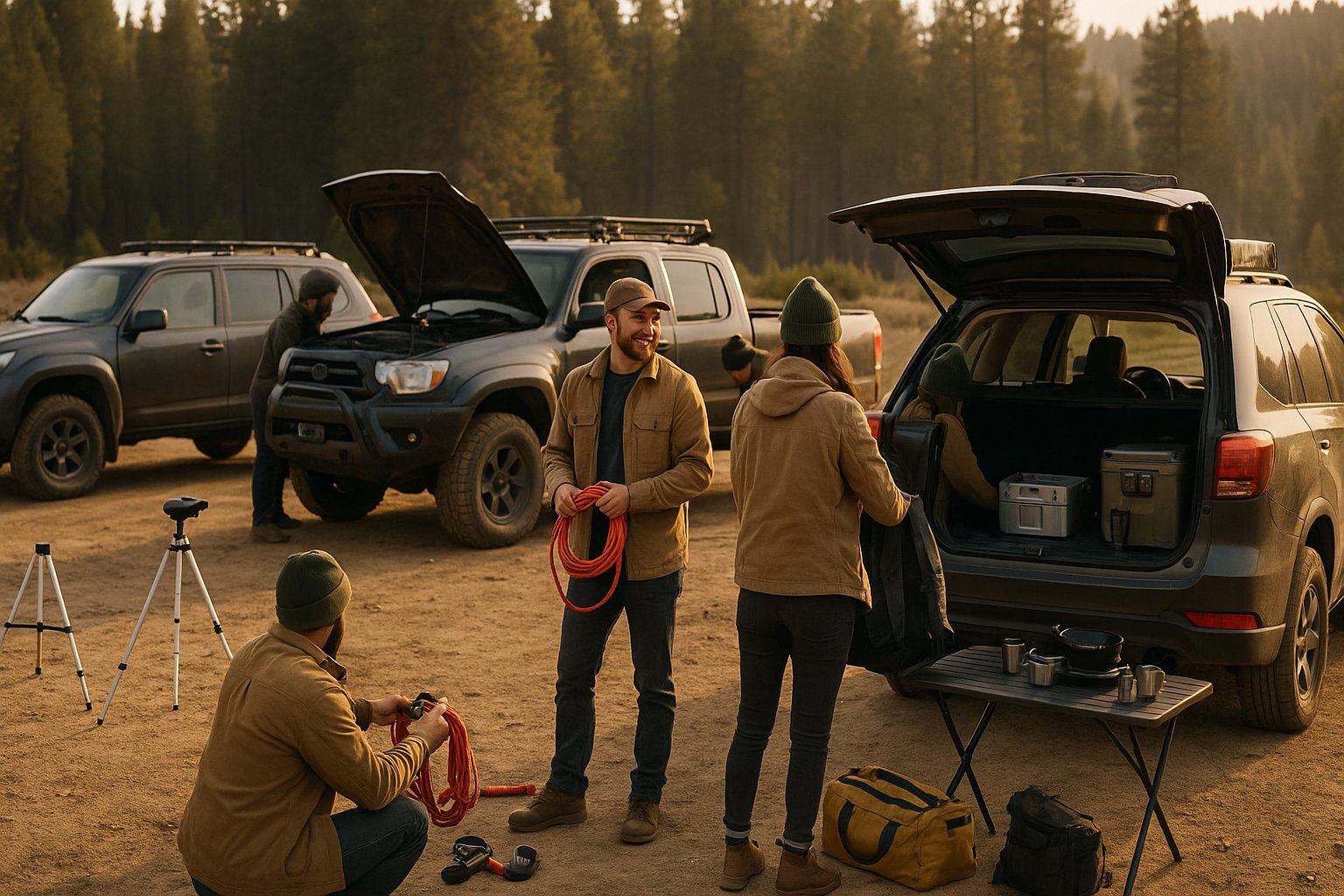Whether you are new to off-roading or a seasoned driver, heading out with friends makes every trail better. Small group planning and practical preparation are the secret to low-stress, high-fun adventures.
Personal Anecdote
A weekend that became a tradition
Last fall my friends and I took a three vehicle convoy into a nearby forest service area. The route started as a dusty two track and ended in a muddy creek crossing that none of us expected. We spent the afternoon helping each other recover a stuck rig, sharing tools and stories, and cooking dinner around a tailgate. That trip bonded our group and became the template for future outings.
Planning and Prep Checklist
Before you go
- Choose a trail that matches your group skill level and vehicle capabilities.
- Check land status permits access and whether seasonal closures apply.
- Confirm weather and trail conditions the day before departure.
- Set a clear meeting time, route, and turnaround time. Share these with someone not going.
- Create a simple drive plan with planned stops and estimated times.
Vehicle Prep Checklist
Essentials to inspect
- Tires and pressures. Inspect tread and sidewalls and set pressures for trail conditions.
- Fluids. Check oil, coolant, transmission fluid, and brake fluid.
- Battery and electrical. Ensure secure terminals and a healthy charge.
- Recovery points. Confirm rated front and rear recovery points are accessible.
- Recovery gear. Pack tow straps, shackles, a winch or a manual recovery kit and a shovel.
- Spare tire and tools. Full size spare, jack rated for your vehicle, and lug wrench.
Trail Etiquette and Safety Tips
How to be a good trail partner
- Stay on designated trails. Protect fragile ecosystems and avoid unnecessary damage.
- Yield rules. Uphill traffic usually has the right of way. Passenger cars yield to trucks when needed.
- Keep distance. Maintain a safe following distance to avoid rock throw and give space for recovery.
- Communicate. Use radios or phones on a prearranged channel. Call hazards and slowdowns early.
- Help others. If you pass a stuck vehicle and you can assist safely, stop and offer support.
Packing List
Group and personal items
- Water: at least one gallon per person per day and extra for vehicles.
- Food: high calorie snacks and a simple meal with a stove or grill if staying late.
- First aid kit: include blister care, bandages, and any personal meds.
- Navigation: paper maps and GPS app offline maps. Know how to read a compass.
- Tools: basic tool kit, duct tape, zip ties, and a small air compressor for adjusting tire pressures.
- Clothing: layers, rain jacket, gloves, and sturdy footwear.
- Lighting: headlamps and spare batteries. Tailgate lights if you end up working after dark.
Photography Tips for Capturing the Adventure
Make the photos feel like the day
Shoot during golden hour for warm, flattering light. Capture candid moments around the camp and during recovery work to tell the story of teamwork. Use a wide lens for landscape and a mid telephoto for action shots of vehicles moving through obstacles.
Practical gear tips
Bring a small tripod and a polarizing filter to reduce glare on water and windows. If you use a drone, check local regulations and keep it well away from people and wildlife. Back up photos at the end of the day to a cloud service or a portable SSD.
Recommended Trail Types by Skill Level
Beginner
Choose graded forest roads and wide gravel tracks. These trails teach basic wheel placement, low range driving, and group recovery without extreme technical obstacles. Example features include gentle inclines and hard packed surfaces.
Intermediate
Move up to single lane trails with rocky sections and shallow creek crossings. You will practice traction control, rock hopping, and partner recovery techniques. Bring traction boards and a second vehicle in the group for safety.
Advanced
Advanced trails include steep ledges, deep mud, and technical rock crawling. These require specialized gear, precise tire placement, and experienced spotters. Only attempt these with a well prepared group and reliable recovery equipment.
Conclusion and Call to Action
Off-roading with friends creates stories you will retell for years. With thoughtful planning, proper vehicle prep, and respect for the land and fellow trail users, every trip can be safe and fun. Start small, learn together, and build your skills as a team.
Plan a weekend, invite a few friends, and put this checklist into practice. Share your trip photos and tips with the CFCX Life community so others can learn from your experience.
Three Quick Takeaways
- Plan the route and contingencies. Share your plan with someone who is not going.
- Vehicle prep and basic recovery gear save trips from becoming disasters.
- Practice good trail etiquette. Help others and protect the land so everyone can enjoy it.

Leave a Reply
You must be logged in to post a comment.